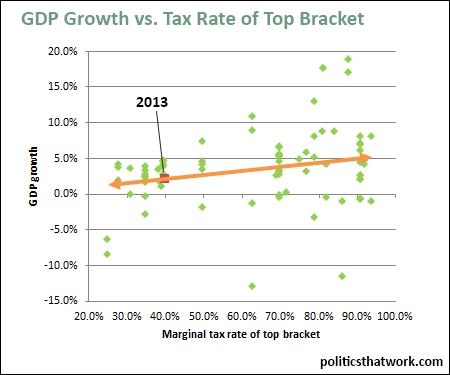
Description: The marginal tax rate of the top individual income tax bracket is correlated with the GDP growth for every year since 1930.
Sources: BEA Tax Policy Center
Last updated: December 31, 1969

EPI: The Tax Cuts and Jobs Act isn’t working and there’s no reason to think that will change
CNN: Trump ordered Mattis to screw Amazon
Elijah Cummings: We are in a fight for the soul of our democracy
Pro Market: The Cost of America’s Oligopoly Problem